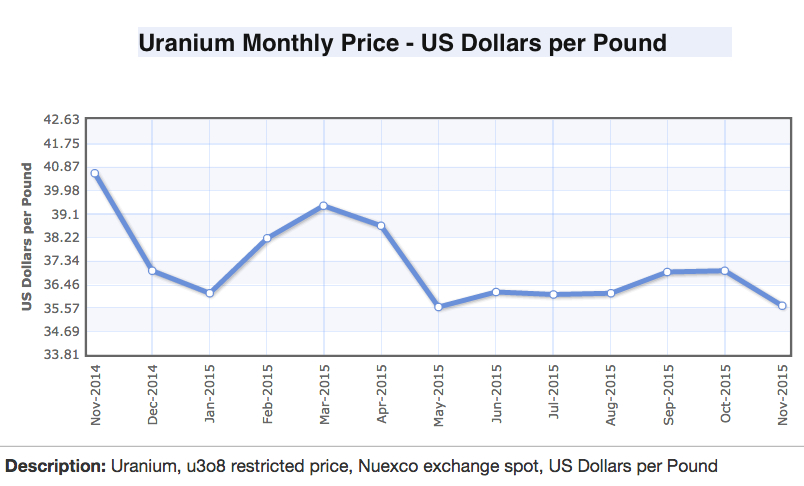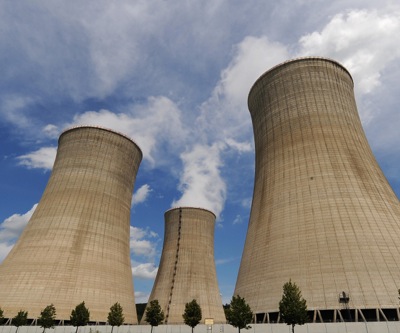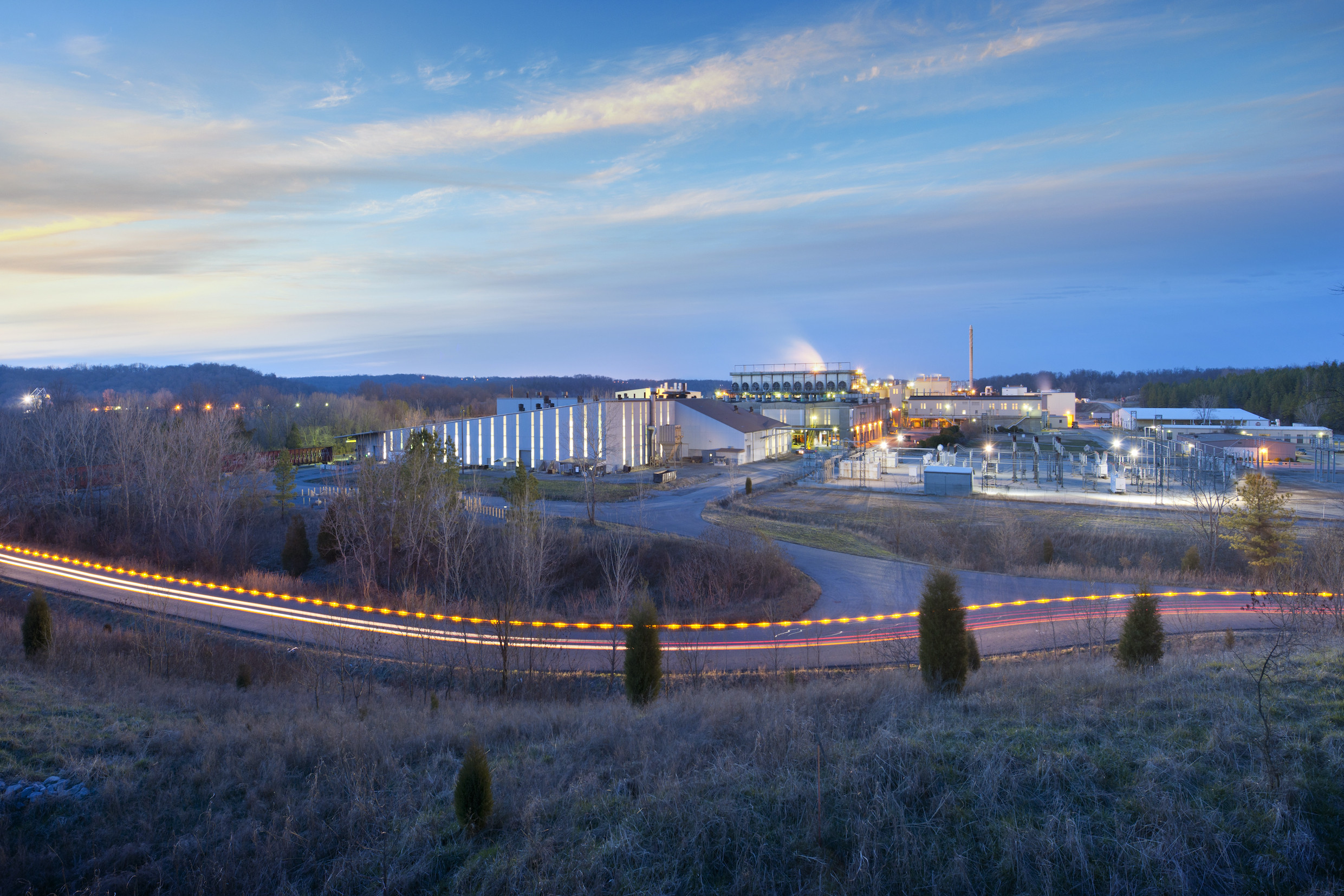This was the top-performing mining commodity of 2015
Despise missing expectations for the year, uranium —the radioactive material used as fuel for power-generation plants— has emerged as the best-performing mining commodity of 2015.
Spot uranium prices last traded at $35.80 per pound, less than the expected $40 per pound expected, but on track for gains of 0.85% since starting the year at $35.50/lb, according to Australian investment bank, Macquarie.
The metal that powers nuclear reactors has been gradually recovering from a sharp decline in the wake of Japan’s Fukushima disaster in 2011, and analysts expect the commodity to continue putting a smile on investors’ faces next year, as prices are set to keep climbing.
Credit Suisse, for one, forecasts that spot uranium prices will gain in 2016 to average $40 a pound, before reaching $45 in 2017, $50 in 2018 and $60 a pound in 2019.

Source: Index Mundi.
Investment bank Cantor Fitzgerald is also bullish on uranium, anticipating a supply crunch in the near future, as the drive for “clean” sources of energy encourages countries to use non-polluting fuels, Investing News reported:
“Cantor Fitzgerald estimates global uranium demand for 2017 and 2018 at 198 million pounds and 201 million pounds U3O8, respectively; as of 2017, about 25 million pounds U3O8 will be uncovered, with that number falling to 40 million pounds by 2018. These numbers translate into uncovered amounts of 13 and 20 percent, respectively, with the uncovered portion growing at a rapid rate in the following years.
“What’s more, available supply from stockpiles and existing uranium operations likely won’t be able to match the new demand coming into the market.”
Asian demand
That demand is likely to come mainly from Asia, particularly from China, which is aiming to have 58 gigawatts of nuclear-generating capacity by 2020. Of the 64 reactors currently under construction globally, 21 are in China, according to the International Atomic Energy Agency.
In fact, the Asian giant is on track to replace the U.S. as the world’s top uranium consumer, according to Washington D.C.’s Center for Strategic and International Studies.
Demand from Japan and India are also expected to push process higher. Tokyo restarted two nuclear energy facilities earlier this year and has approved the restarting of two more in 2016, although this is subject to an injunction appeal.
India, in turn, plans to produce 25% of its electricity from nuclear power by 2050, according to the World Nuclear Association.
{{ commodity.name }}
{{ post.title }}
{{ post.date }}





Comments